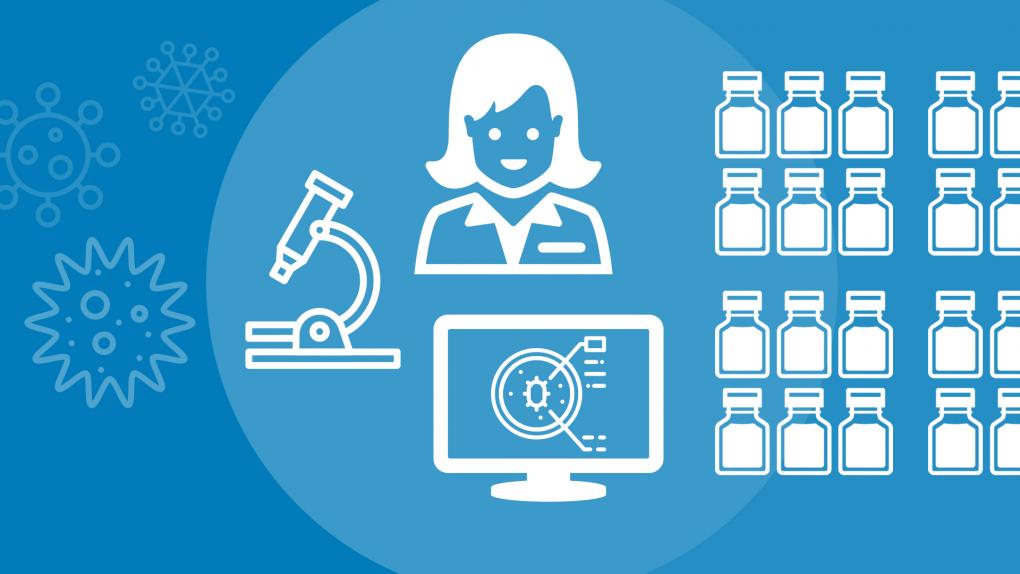The flu (influenza) vaccine you get at your doctor’s office or pharmacy is the result of year-round work of highly skilled microbiologists, epidemiologists, physicians and other public health experts.
Sound complicated? It is.
As new strains of flu viruses emerge, the U.S. Food and Drug Administration closely coordinates with sister agencies and works with manufacturers to help the development of vaccines to protect from the flu, a disease that can cause severe illness.
The FDA and other parts of the U.S. Department of Health and Human Services are working to advance the development of new technologies for producing flu vaccines so we can better respond to influenza public health emergencies. All FDA-approved flu vaccines have been evaluated and determined to be safe and effective by the FDA.
There is often more than one type of flu virus circulating each season. So, vaccines are made to target the most likely viruses to circulate and cause illness in the U.S. during the upcoming flu season.
FDA-approved Flu Vaccines Are Safe and Effective
The flu vaccine works by triggering your immune system to produce antibodies that help prevent influenza disease.
Most of the U.S. flu vaccine supply is made using an egg-based production process. In this method, manufacturers use fertilized eggs to grow the flu viruses. After about six months of laboratory work and manufacturing, those viruses are incorporated into that season’s flu vaccine.
This method has been used for decades to produce safe and effective vaccines. The FDA, HHS and manufacturers continue to work on ways different technologies can help develop new flu vaccines.
Having different types of flu vaccines helps ensure that safe and effective vaccines are available to respond to the ever-changing nature of flu viruses. For example, the FDA has approved adjuvanted flu vaccines and flu vaccines that do not use egg-based manufacturing, including cell-based and recombinant protein vaccines.
In addition, the FDA has approved flu vaccines specifically for people ages 65 and older, who typically bear the greatest burden of severe influenza disease and account for most flu-related hospitalizations and deaths.
Making the Flu Vaccine: A Year-round Effort
The job of producing a new vaccine for the next flu season starts well before the current season ends. For the FDA, it’s a year-round initiative.
Flu viruses are constantly evolving. The flu viruses that circulate and cause disease in people often change from one year to another, necessitating a new vaccine every year.
To accomplish this, the FDA, World Health Organization, the Centers for Disease Control and Prevention and other partners collaborate by collecting and reviewing data on the circulating flu strains from around the world to identify those likely to cause the most illness in the upcoming season.
In late February/early March — well before the new influenza season begins, the FDA convenes its vaccines advisory committee to review data about which flu viruses have caused disease in the past year, how the viruses are changing, and disease trends so they can recommend the flu virus strains to include in the vaccines for the upcoming U.S. flu season.
Once the strains are selected, vaccine manufacturers begin the manufacturing process to include the newly selected flu strains in their FDA-approved vaccines. The different virus strains are combined to formulate the vaccine into standard dosages. The vaccine is then filled into vials, syringes and, for the nasal vaccine, sprayers.
Manufacturing an approved flu vaccine using either egg-based or non-egg-based manufacturing methods requires high-tech processes and FDA-inspected manufacturing facilities. Vaccine manufacturers must submit applications to the FDA to include the new flu strains in their FDA-approved vaccines and updated prescribing information.
In its own laboratories, the FDA also produces materials critical for making the vaccine. These include generating candidate vaccine virus strains suitable for further vaccine manufacturing and producing the critical potency reagents, which are materials needed to test the vaccines for potency and identity (to ensure standardization) before the FDA approves the updated seasonal flu vaccines for U.S. distribution.
The FDA is also responsible for ensuring that released lots of flu vaccines meet appropriate standards. Each vaccine undergoes quality control tests, including for sterility. Manufacturers submit the results of their testing, along with sample vials from each lot to the FDA for “lot release.”
The FDA typically begins releasing lots of flu vaccines in late summer. Lot release can continue into early fall. Once lots are released, manufacturers distribute vaccines throughout the U.S. for use by the public.
Getting a Flu Vaccine Is Your Best Prevention
Flu seasons and their severity are unpredictable. The best way for most people to reduce their risk from seasonal flu and its potentially serious complications is to get a flu vaccine every year.
To learn more about the flu and other respiratory viruses, their risk factors and disease prevention, visit cdc.gov/RiskLessDoMore.



